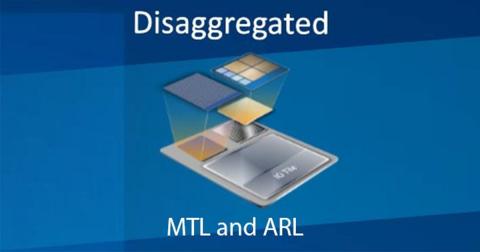
According to a prominent TechTuber centered on leaks, Intel's 15th Gen Core Arrow Lake processors will offer a 45% IPC (instructions per clock) upgrade compared to the groundbreaking and still popular Alder Lake series. That sounds like a huge leap, and it might be easy to feel cynical, but we'd probably be disappointed if the difference between Intel's 12th and 15th Gen Core processors was any less. No matter how plausible this may seem, please always take news from such unofficial sources with a grain of salt.
The 45% IPC improvement claim made by Red Gaming Tech is about performance cores or P cores. RGT's sources did not disclose the percentage IPC boost for the efficiency cores or E cores. However, the performance of the E-core at Lake Arrow was summed up as "extremely impressive", which remains promising.
In the Lake Arrowhead slideshow above, as shared by RGT, you can see that the upcoming CPU architecture (for desktop chips, abbreviated as ARL-S) will offer up to 8P/16E configurations, which means consumer Up to 32 threads can be used. Just as Alder Lake and Raptor Lake (and a rumored Raptor Lake refresh) share the LGA 1700 platform, according to the leaker, Arrow Lake and its desktop predecessor (Meteor Lake or MTL-S) will share the same package, socket and lead-in foot layout.
So Arrow Lake might be a little bit exciting, offering a very worthwhile speed boost over current-generation Intel processors, but many of its special features will make their debut in Meteor Lake's official launch later this year. MTL-S will be the first Intel processor to use a disaggregated core, mixing Intel 4, Intel 20A and TSMC N3 silicon on a single chip. It remains to be seen what benefits the arrival of MTL-S will bring, but another slide from RGT shows that these processors will be 15-20% faster than Raptor Lake on average, but there will be graphics due to the iGPU made by TSMC N3 An even more impressive (but unspecified) boost.
PC enthusiasts and DIYers naturally love the massive performance boost across generations. Since the early 1990s, compound upgrades to the IPC, along with improvements in clock speed and/or core count, have kept the PC at the pinnacle of home technology. Over the years, CPU development along with advances in GPUs, displays, storage, and more have combined to enable incredible new games and previously impossible applications. Despite the constant news of the end of Moore's Law (and news to the contrary), it's good to see news of progress from all corners of the PC technology landscape.


